We are continuing the publication of Thierry Meyssan’s new book, « Right Before Our Eyes ». In this episode, he describes the way in which President Jimmy Carter and his national security advisor, Zbigniew Brzezinski, used the terrorist capacities of the Muslim Brotherhood against the Soviets.
The Brotherhood in the service of the Carter-Brzeziński strategy
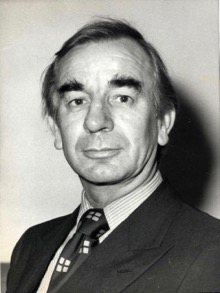
- Sir James MacQueen Craig, specialist of the Middle East, convinced the United Kingdom to use the Muslim Brotherhood for secret operations outside of Egypt. It was also Craig who conceived the plan for the « Arab Springs » on the model of the operation led in 1915 by Lawrence of Arabia.
In 1972-1973, an official from the Foreign Office – and probably MI6 as well – Sir James Craig, together with the British ambassador to Egypt, Sir Richard Beaumont, began an intense lobbying campaign aimed at harnessing the Muslim Brotherhood for use by the United Kingdom and the United States in the struggle against the Marxists and the nationalists, not only in Egypt, but also all over the Muslim world. Sir James was soon to be nominated as Her Majesty’s ambassador in Syria, then in Arabia, and would find an attentive ear at the CIA. Much later, he was to become the designer of the “Arab Springs”.
In 1977, Jimmy Carter was elected President of the United States. He appointed Zbigniew Brzeziński as his National Security Advisor. Brzeziński decided to use Islamism against the Soviets. He gave the Saudis the go-ahead to increase their payments to the Islamic World League, organised regime changes in Pakistan, Iran and Syria, destabilised Afghanistan, and made US access to oil from the “Greater Middle East” a national security objective. Finally, he entrusted the Brotherhood with military equipment.
This strategy was clearly explained by Bernard Lewis during the meeting of the Bilderberg Group [1], organised by NATO in Austria, April 1979. Lewis, an Anglo-Israeli-US Islamologist, assured that the Muslim Brotherhood could not only play a major role against the Soviets and provoke internal trouble in Central Asia, but also balkanise the Near East in favour of Israel.
Contrary to a widely-held belief, the Brotherhood was not happy about following the Brzeziński plan – it was looking further afield. It had obtained the assistance of Riyadh and Washington for the creation of other branches of the Brotherhood in other countries – branches that were to come to fruition later on. The King of Arabia granted an average of $5billion annually to the Muslim World League, which extended its activities in 120 countries and financed various wars. As a point of reference, $5 billion was the equivalent of the military budget of North Korea. The League obtained advisory status for the Economic and Social Council of the United Nations, and the post of observer for UNICEF.
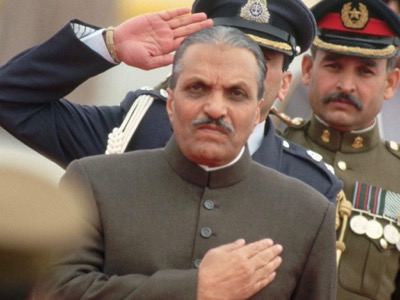
- General Muhammad Zia-ul-Haq, the first Head of State to be a member of the Muslim Brotherhood outside of Egypt, allowed combatants of the Brotherhood to have access to a rear base in their fight against the Afghan Communists.
In Pakistan, General Muhammad Zia-ul-Haq, the Army Chief of Staff, trained at Fort Bragg in the United States, overthrew President Zulfikar Alî Bhutto and had him hanged. A member of the Jamaat-e-Islami, in other words the local version of the Muslim Brotherhood, he went on to Islamise Pakistani society. The Sharia was progressively established – including the death penalty for blasphemy – and a vast network of Islamic schools was set up. It was the first time that the Brotherhood had been in power outside of Egypt.
In Iran, Brzeziński convinced the Shah to abdicate, and organised the return of Imam Ruhollah Khomeini, who defined himself as a “Shiite Islamist”. In his youth, in 1945, Khomeini had met Hasan al-Banna in Cairo, and convinced him not to exacerbate the Sunni/Shiite conflict. Later, he translated two books by Sayyid Qutb. The Brotherhood and the Iranian Revolutionaries agreed on social subjects, but not at all on political questions. Brzeziński realised his mistake the very day that the Ayatollah arrived in Teheran. Khomeini immediately went to pray at the tombs of the martyrs of the Shah’s régime, and called on the army to revolt against imperialism. Brzeziński committed a second error by sending Delta Force to save the US spies who were being held hostage in their embassy in Teheran. Even if he was able to hide from Western eyes the fact that these “diplomats” were actually spies, he made a laughing-stock of his soldiers with the failed mission “Eagle Claw”, and convinced the Pentagon that it was necessary to find a way of defeating Iran.
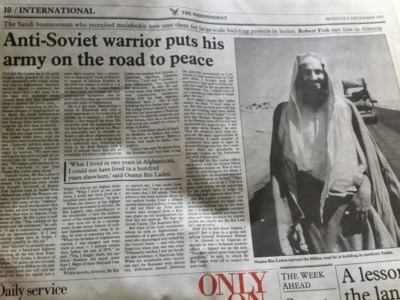
- Saudi billionaire Oussama Ben Laden, hero of the Western powers against the Soviets.
Brzeziński set up “Operation Cyclone” in Afghanistan. Between 17,000 and 35,000 Muslim Brothers from about 40 countries came to fight the USSR, which had come to the defence of the Democratic Republic of Afghanistan, at its request [2]. There had never been a “Soviet invasion”, as US propaganda pretended.
The men of the Brotherhood came to reinforce a local coalition of conservative combatants and the local Muslim Brotherhood, including the Pashtun Gulbuddin Hekmatyar and the Tajik Ahmad Shah Massoud. They received the major part of their armament from Israel [3] – officially their sworn enemy, but now their partner. All these forces were commanded from Pakistan by General Muhammad Zia-ul-Haq, and financed by the United States and Saudi Arabia. This was the first time that the Brotherhood had been used by the Anglo-Saxons to wage war. Among the combatants present were the future commanders of the wars in the Caucasus, of the Indonesian Jemaah Islamiyah, the Abu Sayyaf group in the Philippines, and of course al-Qaeda and Daesh. In the United States, the anti-Soviet operation was supported by the Republican Party and a small group from the extreme left, the Trotskyists of Social Democrats USA.
The Carter-Brzeziński strategy represented a change of scale [4]. Saudi Arabia, which up until then had been financing the Islamist groups, found itself tasked with managing the war funds for the fight against the Soviets. The general director of Saudi Intelligence, Prince Turki (son of King Faisal), became an indispensable personality for all the Western summits on Intelligence.
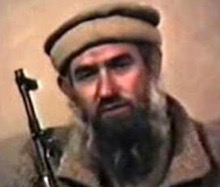
- The Palestinian Abdallah Azzam and the Saudi Oussama Ben Laden were trained in Riyadh by Mohammad Qutb, Sayyid Qutb’s brother. They successively directed the Muslim Brotherhood combatants in Afghanistan.
In the early phases, so many problems arose between the Afghans and Arabs that it was impossible to get them to fight together against the Communists. Prince Turki first sent the Palestinian Abdallah Azzam, the “Imam of Jihad”, to bring order to the Brotherhood, and run the Kabul office of the Muslim World League, but the office did not do well and was closed. Azzam was then succeeded by billionaire Osama Ben Laden. Both of them had been trained in Saudi Arabia by Sayyid Qutb’s brother.
During Carter’s term, the Muslim Brotherhood also undertook a long campaign of terror in Syria, including the assassination, by the Muslim Brotherhood’s “Fighting Vanguard”, of non-Sunni cadets at the Military Academy of Aleppo. The “Vanguard” were able to use training camps in Jordan, where the British handled their military instruction. During these “Years of Lead”, the CIA managed to broker an alliance between the Muslim Brotherhood and the small group of ex-Communists under Riyadh al-Turk. He and his Syrian dissident friends, Georges Sabra and Michel Kilo, had split with Moscow during the Lebanese civil war to support the Western camp. They affiliated themselves with the US Trotskyist group, Social Democrats USA. Together, the three men drew up a manifesto in which they affirmed that the Muslim Brotherhood formed the new proletariat, and that Syria could only be saved by US military intervention. Finally, the Brotherhood attempted a coup d’état in Syria in 1982, with the support of the Iraqi Ba’ath Party (which was collaborating with Washington against Iran) and Saudi Arabia. The combats which followed at Hama caused 2,000 deaths according to the Pentagon, 40,000 according to the Brotherhood and the CIA.
After that, hundreds of prisoners were slaughtered in Palmyra by the brother of President Hafez al-Assad, Rifaat, who was dismissed and forced into exile in Paris when he attempted, in his turn, a coup d’état against his own brother. The Trotskyists were imprisoned, and most members of the Brotherhood fled either to Germany (home of ex-Syrian Guide Issam al-Attar), or to France (like Abu Musab the Syrian). Chancellor Helmut Kohl and President François Mitterrand granted them asylum. Two years later, a scandal broke out within the opposition – which was in exile at the moment of division – $3 million had disappeared out of an envelope of $10 million donated by the Muslim World League.
Towards the constitution of an Internationale for jihad
During the 1980’s, the Muslim World League received instructions from Washington to transform Algerian society. Over a period of ten years, Riyadh paid for the construction of mosques in the villages of Algeria. Each time, a dispensary and a school were built alongside the mosques. The Algerian authorities were delighted with this assistance, especially since they were no longer able to guarantee the people’s access to health care and education. Progressively, the Algerian working classes distanced themselves from the state which was no longer much use to them, and grew ever closer to these generous mosques.
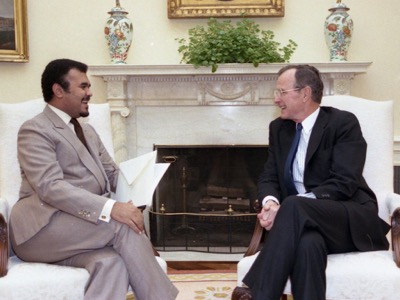
- President Bush senior, ex-Director of the CIA, became friendly with the Saudi ambassador, Prince Bandar ben Sultan ben Abdelaziz Al Saoud, head of the Intelligence services of his country, who was later to become his opposite number. Bush considered him as his adopted son, which is how the Prince gained the nickname Bandar Bush.
When Prince Fahd became the King of Saudi Arabia in 1982, he nominated Prince Bandar (son of the Minister for Defence) as ambassador to Washington, a post he retained for the duration of Fahd’s reign. His function was double – on one side, he looked after Saudi-US relations, on the other, he served as an interface between the Director of Turkish Intelligence and the CIA. He became friends with the vice-President and ex-Director of the CIA, George H. W. Bush, who considered him as his “adopted son” (whence his nickname “Bandar Bush), then with Secretary for Defense Dick Cheney and the future Director of the CIA, George Tenet. He made his way into the social life of the elite and also had an entrée into the Christian cult of the Pentagon Chiefs of Staff, called The Family, as well as the ultra-conservative Bohemian Club of San Francisco.
Bandar directed the jihadists from the Muslim World League. He negotiated with London for the purchase of weapons from British Aerospace for his kingdom, in exchange for oil. These record-breaking “pigeon” contracts, in Arabic “Al Yamamah”, would cost Riyadh between 40 and 83 billion pounds sterling, of which an important part would be transferred to the Prince by the British. A corruption and fraud scandal arose, but was suppressed by the Saudi and British governments.
In 1983, President Ronald Reagan entrusted Carl Gershman, ex-leader of the aforementioned Trotskyites, Social Democrats USA, with the directorship of the new National Endowment for Democracy [sic] [5]. This was an agency which depended on the “Five Eyes” agreement, camouflaged as a NGO. It was the legal window for the secret services of Australia, Britain, Canada, the United States and New Zealand. Gershman had already worked with his Trotskyist comrades and his Muslim Brotherhood friends in Lebanon, Syria and Afghanistan. He set up a vast network of associations and foundations that the CIA and MI6 used to help the Brotherhood wherever possible. He pledged allegiance to the “Kirkpatrick Doctrine”, which basically states that all alliances are justified so long as they serve the interests of the United States (against its rivals, who are ipso facto “totalitarians”.
In this context, the CIA and MI6, who, at the peak of the Cold War, had created the World Anti-Communist League (WACL), used this organisation to supply the necessary funds for the jihad in Afghanistan. Oussama Ben Laden belonged to the organisation, which included several Heads of State [6]
In 1985, the United Kingdom, faithful to its tradition of academic expertise, equipped itself with an institute tasked with studying Muslim societies and the ways in which the Brotherhood could influence them – the Oxford Centre for Islamic Studies.
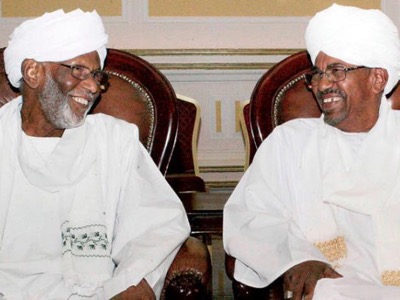
- Hassan el-Tourabi and Omar el-Bechir imposed the presence of the Muslim Brotherhood in Sudan. In the particularly sectarian and reactionary context of their country, they entered into dissidence with the Brotherhood before they destroyed one another mutually.
In 1989, the Brotherhood succeeded in perpetrating a second coup d’état, this time in Sudan, on behalf of Colonel Omar el-Bechir, who wasted no time in nominating the local Guide, Hassan al-Turabi, as President of the National Assembly. In a conference held in London, al-Turabi announced that his country was going to become the rear base for all the Islamist groups in the world.
Also in 1989, the Islamic Salvation Front (FIS) arose in Algeria, based around Abassi Madani, while the party in power collapsed under the weight of numerous scandals. The FIS was supported by the mosques “gifted” by the Saudis, and as a result, by the Algerian people who had been frequenting them for a decade. FIS won the local elections, due more to rejection of the country’s leaders than by belief in the ideology of FIS. Considering the failure of the politicians and the categorical impossibility of negotiating with the Islamists, the army carried out a coup d’état and cancelled the elections. The country sank into a long and murderous civil war about which we knew very little, but which claimed more than 150,000 victims. The Islamists did not hesitate to practise both individual and collective punishments, for example when they massacred the inhabitants of Ben Talha – guilty of having voted despite the fatwa forbidding them to do so – and destroyed the village. Evidently, Algeria served as a laboratory for new operations. The rumour spread that it was the army, not the Islamists, who had massacred the villagers. In reality, several senior officers from the secret services, who had been trained in the United States, joined the Islamists and spread confusion.
In 1991, Osama Bin Laden, who returned to Saudi Arabia as a hero of the anti-Communist struggle at the end of the war in Afghanistan, officially fell out with the King, while the “Sururists”, or followers of Sheikh Surur, rose up against the monarchy. This insurrection, the “Islamic Awakening”, lasted for four years, and ended with the imprisonment of the principal leaders. It showed the monarchy – who imagined that they enjoyed total authority – that by mixing religion and politics, the Brotherhood had created the conditions for a revolt via the mosques.
In this context, Osama Bin Laden claimed that he had proposed the aid of a few thousand veterans of the Afghan war to fight Saddam Hussein’s Iraq, but astonshingly, the King seemed to prefer the million soldiers from the US and their allies. Allegedly as a result of this disagreement, Bin Laden left for exile in Sudan – but in reality, his mission was to regain control of the Islamists who had escaped the authority of the Brotherhood and had risen up against the Saudi monarchy. With the Sudan’s Islamist leader Hassan al-Turabi, he organised a series of popular pan-Arab and pan-Islamic conferences, to which he invited the representatives of Islamist and Nationalist movements from about fifty countries. The aim was to create, at the party level, the equivalent of what Saudi Arabia had already succeeded in doing with the the Organisation of Islamic Cooperation, which brought States together. The participants did not know that these meetings were paid for by the Saudis, and that the hotels where they met were under CIA surveillance. Everyone participated, from Yasser Arafat to the Lebanese Hezbollah.
The FBI managed to convict the BCCI, a gigantic Muslim bank which had become, over time, the bank used by the CIA for its secret operations, particularly the financing of the war in Afghanistan – but also the narco-traffic in Latin America [7]. When the BCCI was declared bankrupt, its smaller clients were not reimbursed, but Osama Bin Laden managed to recover $1.4 billion to continue the Muslim Brotherhood’s work for Washington. The CIA then transferred its activities to the Faysal Islamic Bank and its subsidiary, Al-Baraka.
https://www.voltairenet.org/article206955.html
 TheAltWorld
TheAltWorld 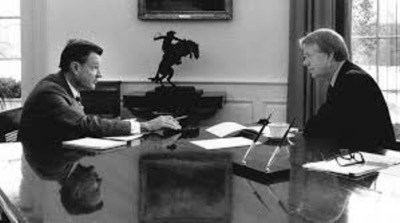
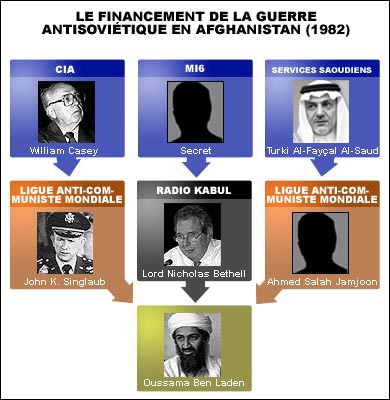
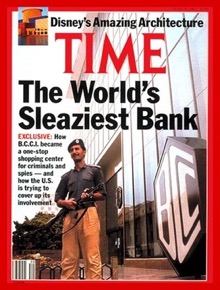

0 thoughts on “The Muslim Brotherhood as an auxiliary force of MI6 and the CIA-3”